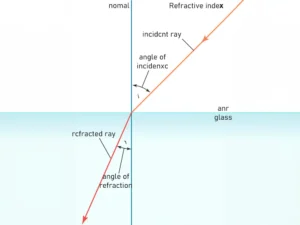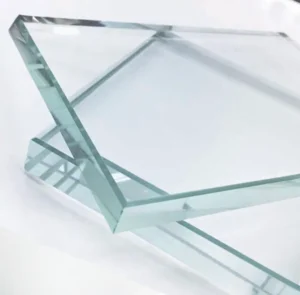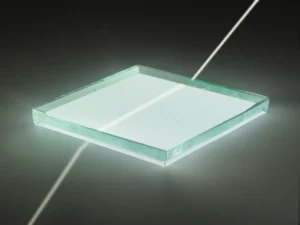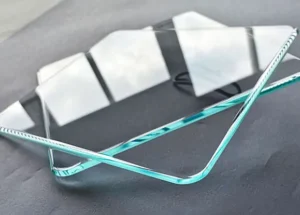Glass products are not all about clarity or beauty. Undoubtedly, they create a mesmerizing scene, but their beauty owes to many features.
One of the top features is refracting the light from the glass materials. It helps understand the various areas of the glass and helps in multiple industries.
Today, we will sort out the refractive index of glass and understand how it affects the overall glass clarity and beauty.
What is the refractive index of glass?
When light passes from one medium to another, it refracts at a specific angle. The measure of those angles gives the value of the refractive index.
So, what exactly is the refractive index of glass?
In actuality, it measures the speed of light in glass to speed in the vacuum. If the speed of lights decreases rapidly with the increased bending, you often get a higher refractive index.
How do you measure the refractive index of glass?

There is a definite formula to calculate the refractive index of the glass.
Refractive Index= Velocity of Light in Glass/Velocity of Light in Vacuum
Various methods help determine the light speed in the glass and give accurate values of the refractive index.
Here are three key methods in the calculation of the refractive index of glass.
- Refractometry. It uses a special tool named a refractometer that measures the angle of refraction.
- Interferometry. Interference with the light waves can be fruitful in calculating the bending and slowing of the light with the accurate evaluation of the refractive index!
- Critical Angle Method. Calculate the total angle reflection and then measure the refractive index of the glass. You’ll get the accurate values for the glass materials.
Remember that the refractive index of glass isn’t the same for each glass type. Different glass materials offer different refractive indexes.
Take a look!
| Glass Type | Refractive Index |
| Crown Glass | 1.52 |
| Flint Glass | 1.62 to 1.75 |
| Borosilicate Glass | 1.47 |
| Fused Silica (Quartz) | 1.46 |
| Soda-Lime Glass | 1.51 |
| High-Index Glass | 1.80 to 2.00 |
| Lead Glass | 1.80 to 2.10 |
| Optical Glass | 1.48 to 1.96 |
| Ultraviolet (UV) Glass | 1.47 to 1.50 |
| Infrared (IR) Glass | 1.50 to 1.70 |
Some common glass types are being used in the industry. Their refractive indices are:
| Glass | Index of Refraction |
| Headlight glass | 1.47-1.49 |
| Television glass | 1.49-1.51 |
| Window glass | 1.51-1.52 |
| Bottles | 1.51-1.52 |
| Ophthalmic lenses | 1.52-1.53 |
If you are considering the specific glass types, here is the overview of particular glass refractive indices.
| Glass | Index of Refraction |
| Windshield glass 1 | 1.518 |
| Windshield glass 2 | 1.52 |
| Headlight glass from Toyota Celica | 1.478 |
| Headlight glass from Chevrolet Eurosport | 1.488 |
| Headlight glass from Oldsmobile Cutlass Ciera | 1.488 |
| Headlight glass from Toyota Corolla | 1.478 |
| Bottle glass from Lipton Iced Tea | 1.524 |
Key Benefits of Refractive Index of Glass

The Refractive Index of Glass isn’t just an ordinary value. Instead, it delivers many benefits, such as:
-
Enhanced light manipulation
The varying refractive index of the glass can be super helpful. For example, the high refractive index of glass helps sharpen the light and facilitate better focus. High light control can be helpful in applications that require a sharp focus on objects.
For example, optical devices harness the higher refractive indices of the light and create optical clarity.
-
Improved optical performance

The Refractive Index helps get comprehensive control of the bending of light through the glass. Such a minimal light distortion impacts the applications requiring high optical performance. Many scientific researchers have deployed the glass in various applications due to its high optical performance.
-
Energy Efficiency
You might wonder about energy efficiency, but it is 100% true. Glass control can assist in architectural applications.
It helps control the light reflection from the windows, reduces the heat, and promises a better environment without global warming cases.
With this technique, you can bring light to corners or areas that precisely need the light, reducing energy bills.
-
Aesthetic Versatility
Glass is already famous for its flawless appearance and aesthetic looks. From luxury watches to home windows, you can observe glass applications.
The clear and bright visual appearance of glass materials makes it an ornamental piece in the decorative industry. Superior optical performance with enhanced clarity makes it useful for beauty products.
Why does the Refractive Index of Glass matter a lot?

The Refractive Index of Glass has made an ultimate choice in various industries. One of the most common examples is the optical industry, which has been using glass for decades.
Take an overview of the different applications of glass materials.
-
Eyewear
Eyewear products are the everyday usage materials that you often see. Their optical lenses are made from the high refractive index of glass materials and help in the effective view.
-
Cameras and Microscopes
Cameras and microscopes need to focus on the objects. The enhanced clarity of the high-refractive glass promises an effective view of the microscopic organisms.
-
Fiber Optics
The sharp bending applications of the light through glass have made it suitable for optical signal transmission. It transmits signals to longer distances without a minimal loss!
-
Architectural Glass
The architectural industry is using glass materials for two key reasons. One is the aesthetic look that blends with the home. Second is the light optimization and reduced energy costs. Restaurants and building owners can take the light to dark areas and reduce the lighting usage, which costs electricity.
-
Scientific Instruments
A high refractive index has created a place for glass in the medical industry. From designing simple microscopes to focused glass lenses, medical students can do better research on the organisms.
Conclusion
Since the refractive index of glass is a decisive factor, we have to focus on the customization scenarios of the glass. Here comes the customization scenario, where you can opt for the best glass quality.
Shenxun Glass has 20+ years of experience in glass manufacturing and produces premium-quality glass materials. Select the customized glass options now!
